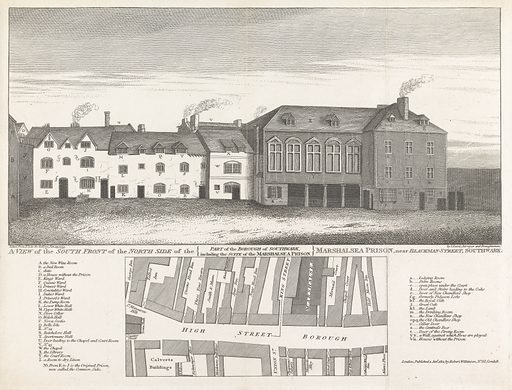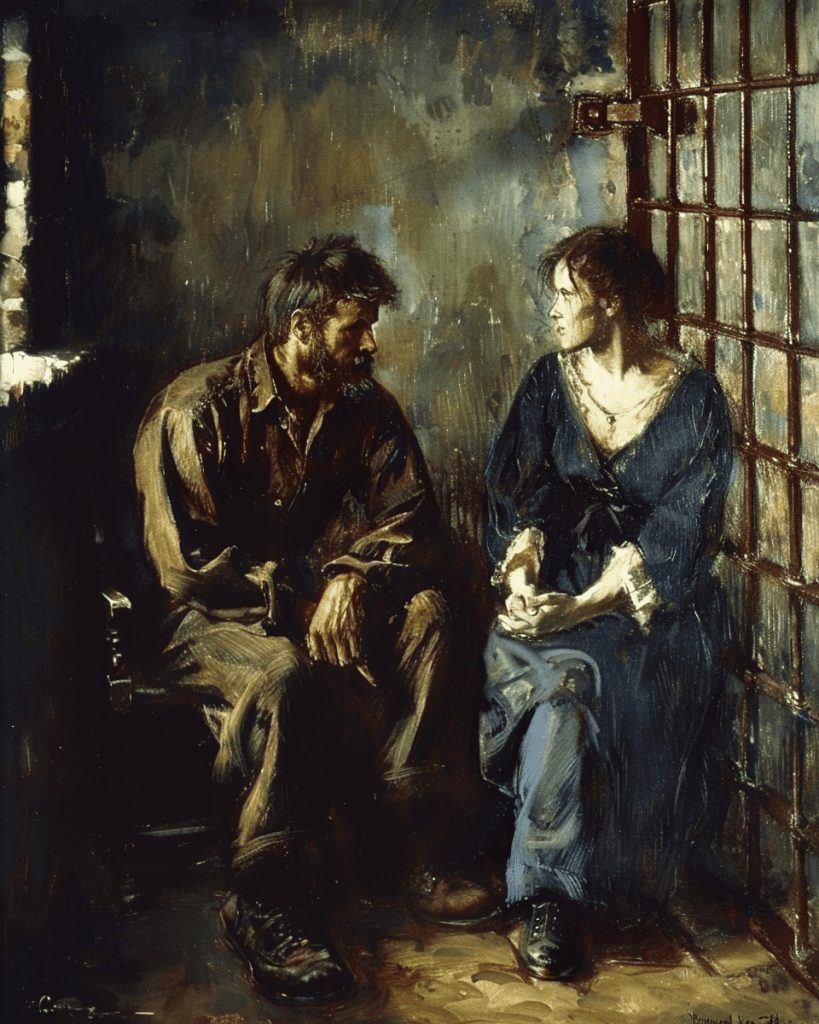As long as people have been locked away, someone has been looking to visit or help the captive escape. Today conjugal visits in the daily news often imply an intimate night of sex incarcerated with your lover in federal custody. Rest assured that this is only partly true, just the tip of the iceberg.
These visits have helped with many escapes and plenty more consolation visits by loving family members throughout human history. Are such visits beneficial to inmates and their families? If so, why are so many jurisdictions cutting back on what some say is essential socialization?
What are conjugal visits and should prisoners be allowed family visits?
Some people have always found it hard to sympathize with those in incarceration, particularly those involved in the resolution of justice. Others may feel prisoners are unjustly kept, wrongly convicted, or living in squalid conditions. Regardless of your feelings towards justice and penal systems, there can be no escaping the essential human need for connection. Visits by family and close friends can meet those needs but at what risk?
Certain rights to every person are part of most social contracts in many progressive nations today. Some say that criminals don’t deserve any rights, shouldn’t be allowed conjugal visits or even the right to life. Others advocate fostering the humane social conditions needed for reform, allowing conjugal visits as means to reintegration into society. It hasn’t always been this way, and to better understand, we only have to look briefly at the past.
Conjugal visitation in Antiquity?
It is essential to understand that the philosophy of law and carrying of justice in ancient times was often rooted in “an eye for an eye.” This commandment originated from sacred scriptures and was put into laws throughout the world as those religions spread. It expresses the principle of reciprocal justice whereby the same injury caused by the perpetrator should be inflicted upon them. There wasn’t a need to keep anyone on site beyond cursory investigation and remedy. People were just executed, exiled, or subjected to corporal punishment.
For those imprisoned, diplomatic visitors, and those providing legal advice have been permitted to visit as far back as the Roman Republic. These visits were professional, whereas a personal or conjugal visit was rarely sanctioned. Slip a few yuan to the right guard, and you might buy some private time; slip the wrong prison jailer a sestertius, and you’ll soon be joining your spouse in a final life-ending conjugal visit.

Protocols changed during the Roman Empire when society became more litigious and diverse. Guests were sometimes allowed for the wealthy or elite, whereas the poor and foreigners were treated with class and societal disdain. Growth led to more reported crimes, disputes, and justice to administer the ever-expanding territory creating many more prisoners, debtors, and disputants awaiting trial or execution.
What about intimate contact for inmates more recently?
As nations grew through industry, they quickly built many prisons and jails. None was as diverse as the prison system of the British Empire during Queen Victoria’s reign.
As the empire grew, they built more prisons, just as the Romans had done millennia ago. The British developed many kinds of new jails; debtors prisons, workhouses, and sanatoriums, each chanting the mantra of reform through penitence. Those in more lenient workhouses might be allowed informal conjugal visits, whereas those in gaol would only learn from the sadistic intimacy of the whip.

Fortunately, advances in psychology started to become better known among the ruling classes. Progressive lawmakers championed reforms away from retributive punishment towards prevention and criminal rehabilitation of those in prison, eventually creating conjugal visits.
A flawed but early attempt at conjugal visitation rights: Parchman Farm, USA
It started with prostitutes. The women were brought in for extended periods to ‘relieve the hard work and satiate the needs of African-American prisoners’ through sex for good behavior. Although this idea was rooted initially in racist preconceptions, they later expanded the program to white men and eventually female inmates.

Despite its crude, flawed nature, it did represent a small step towards allowing conjugal visitation, even if they weren’t family members.
Changing philosophy and law
By the 1930s, Canada’s penal system was anachronistic, but its Parliament now permitted female members. Women had gained the vote and first footholds in legislatures. In particular, Agnes MacPhail lobbied for outright prison reforms after visiting the incarcerated at Kingston penitentiary.
Although her British predecessor Elizabeth Fry had similarly visited Newgate Prison back in 1813 and tried through charities to push reforms, Agnes MacPhail was an enfranchised parliamentarian that succeeded in making changes to the law. Her report of this site to Parliament, contributions to the later Archambault Commission, and Supreme Court decisions forced public policy to change. During her likely-curated visit, she still saw corporal punishment, excessive work, and pain as tools of the correctional trade.
Conjugal visitation programs: Do they work to create family bonds?
Interaction is permitted with varying degrees of privacy, from guard-supervised high-security institutional visits to remotely monitored conjugal stays. This allows everything from physical intimacy between married couples to board games and play between child and parent. It has proven effective at creating family ties, abetting loneliness, offering consolation and affection while re-building a close familial bond between separated families. It is also a rare, valuable occasion for inmates to interact with people outside institutions.
However, these visits also allowed a spouse or loved one to bring in food treats, like that favorite cake (with a hacksaw or cell phone inside). So, it directly facilitated contraband entering prison systems. Spouses would try to sneak in food, alcohol, or tobacco, but also weapons, tools, and drugs. The latter having been found concealed in elderly parents’ dentures, diapers of infant children, and ubiquitous plastic eggs concealed within other family members, including spouses and kids. While programs try to mitigate these security breaches, it comes with increasingly higher costs of conjugal visits.
Conjugal visitation programs: Exercising better care and control
There are two ways to avoid adverse outcomes from visitation programs, advanced screening of inmates and monitoring of the visitors.
Firstly, prisoners are pre-screened, so anyone deemed a safety risk (mental health issues, on death row, perpetrated domestic violence, very close to their release date, is a convicted killer) is disqualified from participation.
Once a visit has been approved-in-principle for low-risk inmates, a background check may be conducted on any potential visitor or their extended family. In advance of the visit, the prisoner may be drug-tested and interviewed to resolve any concerns.
On the day(s) of the interaction, all visitors on prison grounds must surrender their electronic devices for inspection or storage. They may then be full-body scanned or strip-searched to ensure no contraband is being smuggled by a partner, legal spouse, or children.
The stay can last from minutes to overnight visits, to days, but as the security provisions and length increase, so do the costs. From paying for officers to the construction of mobile homes for extended family visits, the cost of providing psychological benefits is always a sore point with taxpayers.
Public sentiment also turns against such initiatives whenever correctional services fail. In New Mexico, one convicted killer fathered four children in prison with different mothers, partly facilitated by the State Family Reunion Program. Across the Atlantic in Germany, in 2010, an inmate murdered his girlfriend and attempted suicide while on an extended family visit. These rare failures, although brutal, are often over-emphasized while the thousands of successes go under-recognized.
New measures, retrenchment, and reforms to conjugal visits
Many nations have now updated what constitutes a family member from married couples and blood relations only, including extended families, adoptees, and same-sex partners.
Pioneering Latin American countries like Argentina, Brazil, and Mexico have led the way in making these 21st-century changes to their new programs. Other jurisdictions have cut conjugal visit programs citing past failures, health restrictions, and taxpayer burden as impetus.
In the mid-1970s, most state, federal, and territorial governments in Australia and America had extensive prisoner visitation programs in place. Today they remain in only four states in America: New Mexico, New York, California, Connecticut, and the Australian Capital Territory and Victoria, respectively. Others have adopted a video conferencing-only program to save costs and mitigate in-person risks.
Some will argue this allows for regular communication between an inmate and a partner or child, but is video alone enough to satisfy human emotional needs? Just ask anyone who spent months isolated from others during lock-downs for the answer. So, be present and spend time with your loved ones while you can; we are only here but once.

